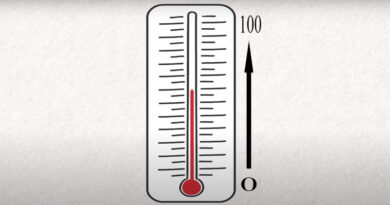What is Humidity? Relative humidity and High Humidity
Humidity call the amount of water vapor in the air. The gaseous condition of water, water vapor, is often invisible to the naked eye. Humidity measure the presence of precipitation, dew, or fog. It identifies by the temperature of the system and pressure. The dew point is a relevant parameter. Although, as the temperature increase, the amount of water vapor demand to reach saturation rises as well.
When the temperature of a parcel of airdrops is below a certain level, it will eventually approach saturation without adding or losing water mass. The amount of water vapor in a given volume of air can vary dramatically. At 30 °C, for example, a parcel of air near saturation may have 28 g of water per cubic meter of air. However, only 8 g of water per cubic meter of air at 8 °C.
Scientists most commonly use absolute, relative, and specific moisture assessments. Absolute humidity calculates by using the mass of water vapor per volume of wet air.
Indeed, the equilibrium ability to hold water vapor in a vacuum is roughly the same as the same volume filled with air; both are determined by the equilibrium vapor pressure of water at a particular temperature. The little discrepancy indicates below under “Enhancement factor,”.
Relative humidity:
The term “relative humidity” calls for the difference between the current level of absolute humidity. Cool air has higher relative humidity than warm air with the same amount of water vapor. The maximal humidity at the same temperature call relative humidity. The ratio of water vapor mass to the total moist air parcel mass calls specific moisture. It has a significant impact on surface life.
Consider the temperature being -10 degrees Celsius (14 degrees Fahrenheit). The air can only carry 2.2 grams of water per cubic meter at such a temperature.
When it’s -10 degrees Celsius outside and there are 2.2 grams of water per cubic meter, we’re at an uncomfortably high 100% relative humidity. At -10 degrees Celsius, 1.1 grams of water in the air equals 50% relative humidity.
High humidity
High humidity reduces the rate of evaporation of water from skin surfaces. However, It reduces heat exchange efficiency in animals that rely on perspiration to control internal body temperature. A heat index table, typically call the humidex.
The idea of air “holding” or being “saturated” by water vapor is frequently known as relative humidity. This is misleading because the amount of water vapor that enters (or can enter) a given region at a particular temperature is virtually completely independent of the amount of air (nitrogen, oxygen, and so on) present.
When the air is full of water vapor, there isn’t much place for anything else. When you sweat in a humid environment, it can be difficult to cool down since your perspiration cannot dissipate as quickly as it should.
Humidity is responsible for a variety of problems, including bacteria in your home (typically in the bathroom, which is constantly wet), as well as failures in common household gadgets.
Moisture from humid air vapor on electronic devices can cause a power outage by interrupting the electric current. If not protected from the effects of dampness, computers and television sets can lose power in this way. A dehumidifier, which removes moisture from the air, makes living with humidity easier.
Hurricanes have a link to high humidity. A hurricane requires air with a high moisture content to form. States bordering the very warm Gulf of Mexico, such as Texas and Louisiana, have humid weather. As a result, there is a lot of rain, flooding, and rare hurricane.



